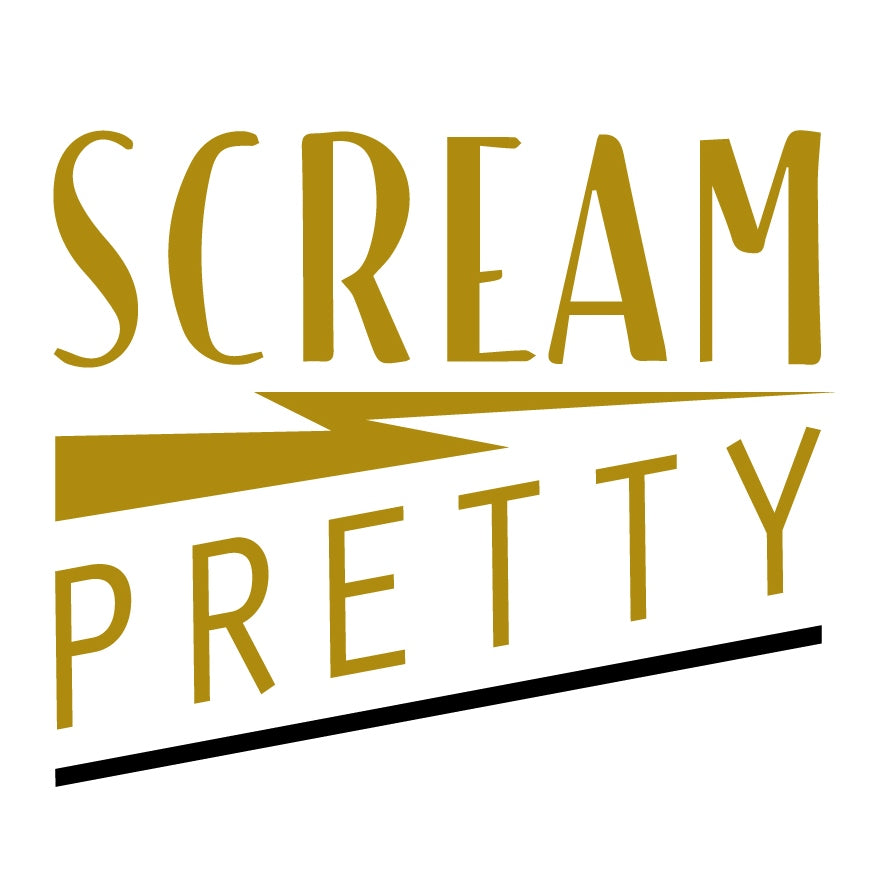
Take the time to decide on your piercing placements, take photos of your ears and study which piercings would suit your anatomy using our handy guide. We suggest visiting a specialist local piercer who will be able to advise you further.
Standard Lobe Piercing

|
Shop The Look
|
Standard first lobe piercings are performed in the centre on the fleshy part at the bottom of the ear known as the Lobule. This is generally where most people start their piercing obsession.
Your lobe piercings are perfect for many styles of earrings; Charm hoops, Huggies, Studs, Hoops, climbers and crawlers making it the most versatile piercing you will ever have. These are the piercing placement you will swap earrings in and out of the most, so be playful with your earring choices.
Many people opt for second, third and even fourth lobe piercings that extend up the ear before you reach the cartilage. The size and shape of your ear and lobe may limit the number of piercings you can fit on your lobe.
SHOP LOBE EARRINGS
Upper Lobe Piercings

|
Shop The Look
|
Align your lobe piercings vertically or in a triangular placement. Known as either an upper lobe or stacked lobe piercing. This is a very modern, pretty way of extending your ear stack.
Dainty small flat back studs work well here.
SHOP FLAT BACKS
Helix Piercing
|
|
Shop the Look
|
Your helix is the cartilage that curves from the outer edge of your ear to the top of your ear.
You can have fun with these piercings, and experiment with earrings styles but for everyday, leave in comfort (we know you sleep in your earrings!). We recommend huggies and flat back cartilage studs.
The helix can be pierced once or multiple times to get your desired look.
SHOP HELIX EARRINGS
Conch and Contraconch

|
Shop the Look
|
Mid ear Cartilage Piercing is called the conch, this is the cartilage that creates the inner curve and back of your ear. If this is pierced on the outer curve, you can wear larger huggies, or conch hoops. For inner conch piercings closer to the middle of the ear. We would recommend flat back cartilage studs.
We have also added climber earrings to outer conch piercing which looks edgy. LOVE.
This is also the position for ear cuffs which give you the same look as a conch hoop without the pain of piercings. Yes, piercing causes a little discomfort while healing but it's worth it.
SHOP CONCH EARRINGS
Daith Piercing

|
Shop the Look
|
The Daith piercing is through the cartilage that makes the inner most fold of your ear. Not all ears are made the same, so take advice from a piercing expert, to see if your earscape can accommodate this stunning piercing, which sits flat and facing forward.
SHOP DAITH EARRINGS
Nose Piercings

|
Shop the Look
For other nose piercings |
The septum piercing is a piercing that is made through the cartilage in the middle of the nose. Our selection of Daith piercings can also be used in the septum piercing of the nose, giving you more options in your curated ear styling. Our Flat Backs work perfectly for the side nose or nostril position
SHOP NOSE EARRINGS
Tragus Piercing

|
Shop the Look
|
The tragus piercing sits in the tiny protruding section of cartilage in front of your ear canal. It’s a great spot for dainty flat back studs - do NOT wear butterfly back studs in this position as the butterfly back could drop into the ear canal!
This is a wide section of cartilage, when it heals you will want to replace the piercing earring, which will have a longer than usual post to accommodate the swelling. Replace with a shorter post flat back earring for a snug and attractive fit.
We also have customers who love to wear huggies in their tragus piercing - so experiment with what works for you.
SHOP TRAGUS EARRINGS
Flat Helix

|
Shop the Look |
Located on the flat section of the ear between the cartilage, between the helix and the forward helix. A great piercing placement as the earring(s) are ‘framed’ by the ear.
Flat back studs are the way to go for this piercing. Go dainty or statement depending on your curated ear styling.
SHOP HELIX EARRINGS
The Piercing Pain Guide - time to Scream Pretty
Lobe PiercingsA small ‘pinch’ of pain when you get it pierced (go and get it done with a needle - not a gun!) then a few days feeling tender - but nothing you can't handle! A standard lobe piercing should heal within 6-8 weeks, avoid changing your earrings during this time. Keep it clean. Don't go swimming in the first few weeks. It will look awesome once it's healed. Keep earrings in these piercings for at least a year so they don't heal up. |
| Cartilage Piercings
Using a needle, this piercing is a little more painful than a lobe piercing but it's so brief in the scheme of things - that you will be shrugging your shoulders 5 minutes later saying ‘that wasn't so bad!’. Good piercers wont pierce more than 3 cartilage piercings at the same time - giving your body time to focus on healing. Healing times are longer 4-12 months, so this is a commitment to an awesome eardrobe. The skin heals first, but the cartilage within takes longer - WAIT - until your piercer says you are ready to remove your piercing jewellery before you update your look. Initially you might want to use a U shaped travel pillow to sleep - so your ear can sit in the hole. |
All Scream Pretty earrings are for fully healed piercings.Step 1 - Get your piercings Step 2 - Heal those piercings Step 3 - Start designing your curated ear with Scream Pretty earrings. |







































